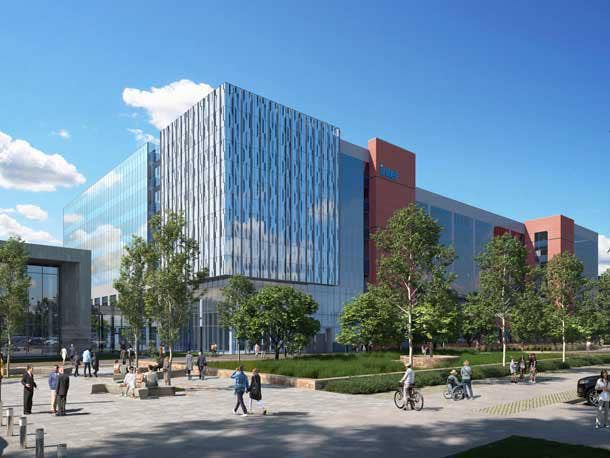Intel Breaks Ground On $20B Chip Facility In Ohio
President Joe Biden joined Intel CEO Pat Gelsinger to celebrate breaking ground in what they called the Silicon Heartland on two advanced chipmaking facilities.

As a marching band played, President Joe Biden and Intel CEO Pat Gelsinger broke ground Friday on a vacant parcel in Ohio that will be home to a $20 billion semiconductor manufacturing campus.
“[This is] the story of the field of dreams in the middle of Ohio, where America‘s future will be built,” Biden told the crowd. “Think about ... the tradition here: The Wright brothers, Neil Armstrong, John Glenn. They defined America’s spirit, a spirit of daring and innovation.”
The building and opening of the campus will create 7,000 union construction jobs, and 3,000 full time jobs with an average salary of $135,000 a year, Biden noted. Not all of them will require a college degree, he added.
[RELATED: High-Tech Executives Hail Signing Of $280B CHIPS Act]
In August, as Intel, Micron Technology, IBM, Lockheed Martin, HP Inc. and AMD executives looked on, Biden signed the $280 billion bipartisan CHIPS Act to boost domestic high-tech manufacturing.
The president said there is irony in the fact that to prep the site, construction crews must dig 60 feet below ground to provide a secure foundation for the facility that will be 10 football fields long.
All this, he said, to make a computer chip that’s the size of fingertip.
“There is nothing, not a single thing [that is] beyond our capacity as a nation, if we do it together as the United States of America,” the president said. “And that’s what we’re going to do.”
The Santa Clara, Calif.-based tech giant closed on the purchase of 750 acres for its semiconductor campus for about $111 million through its Growth Site LLC subsidiary, according to Licking County, Ohio records. The property includes parcels on Clover Valley and Green Chapel roads.
“As you think about this moment, I ask you: what aspect of your life is not becoming more digital?” Gelsinger said before he introduced the president. “... Everything digital runs on semiconductors, including our ability to work remotely through the pandemic. It was because of semiconductors [that we were able] to stay connected with our families and friends, to have virtual schooling and health care through this period.”
He asked the audience if they wanted the nation’s defense to have the most advanced semiconductors in the world.
“You bet we do,” he said
He then asked if they wanted to be dependent on foreign sources for them.
“You bet we don’t,” he added.
Kent Tibbils, vice president of marketing at ASI, a Fremont, Calif.-based national distributor of IT hardware and software products, said anytime there’s an investment in manufacturing in the U.S., it is a good thing but particularly for semiconductors.
“These factories represent long-term, highly skilled job growth across a wide range of businesses including construction, logistics, manufacturing equipment which cost millions of dollars per machine and much more,” he said via email. “The most important thing it means for the channel is the diversification of manufacturing in different geographies will help strengthen supply, improve delivery and ultimately accelerate the release of new technology.”
Gelsinger said passage of the CHIPS Act by lawmakers this summer was the most important piece of industrial policy legislation since World War II.
“We all together deserve to celebrate this moment,” he said. “And I just say thank you all, for all who helped make this most critical legislation happen.”
He said Intel has a history of performing most of the chip research and development and manufacturing in the U.S.
“We put our chips on the table to help the U.S. regain its manufacturing heart, as well as unquestioned technology leadership,” Gelsinger said.
Construction was made possible by the CHIPS and Science Act and the Bipartisan Infrastructure Law. Investing to revitalize the U.S. chipmaking ecosystem will bring a broad range of economic benefits, while helping to restore balance, dependability and resilience to the global semiconductor supply chain, Intel said.